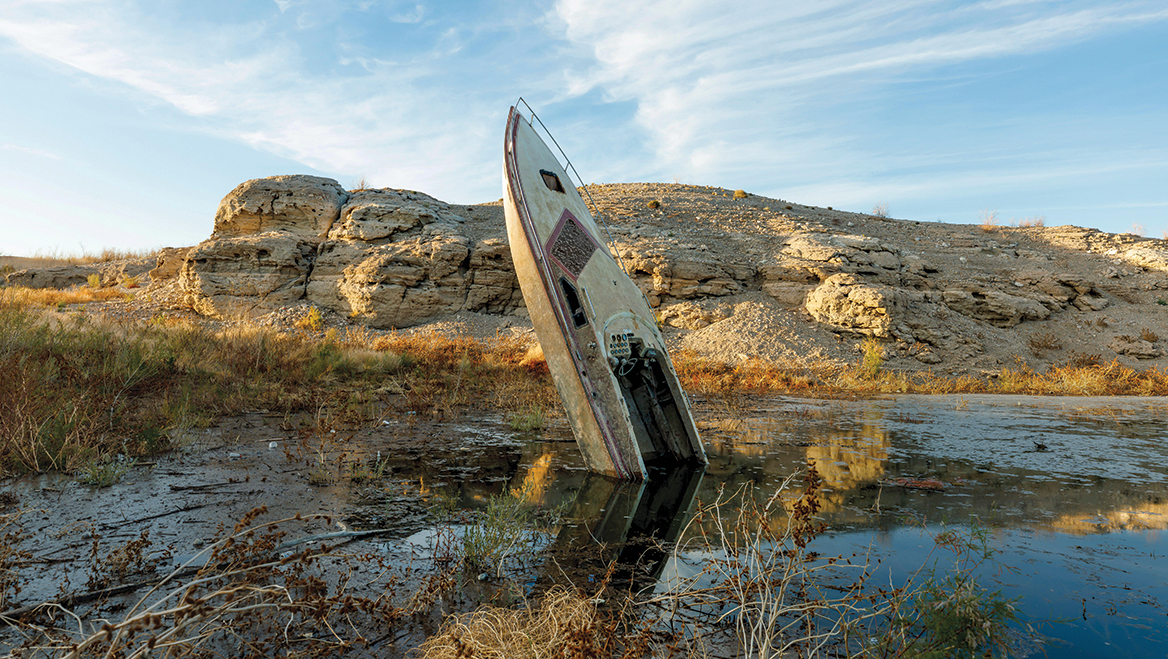

Ongoing Water Scarcity in the American West
Introduction
Water scarcity in the American West has reached critical levels, with reservoirs like Lake Mead and Lake Powell at historically low capacities. This ongoing crisis highlights the pressing need for sustainable water management to address the region’s growing demand and dwindling supplies. As communities, farmers, and policymakers grapple with these challenges, the stakes for the environment and livelihoods couldn’t be higher.
Understanding the Cause
The American West’s water scarcity stems from a combination of natural and human-induced factors. Decades of drought, intensified by climate change, have reduced rainfall and snowpack, which are critical sources for rivers and reservoirs. Simultaneously, rapid urbanization and agricultural expansion have placed immense pressure on limited water supplies. Inefficient irrigation systems and outdated water policies exacerbate the problem, creating a perfect storm of overuse and under-replenishment.
What’s Happening Now
Reservoirs such as Lake Mead, which supports water needs for over 25 million people, are operating at critically low levels. In 2023, the lake reached less than 25% of its capacity, triggering federal restrictions on water usage for states reliant on the Colorado River. Cities like Las Vegas and Phoenix face growing challenges in securing reliable water supplies, while agriculture—the largest consumer of water—has been forced to adapt to dwindling resources.
Farmers are leaving fields unplanted, and ranchers are reducing herds due to water shortages. Meanwhile, urban areas have implemented water conservation measures, including fines for excessive usage and campaigns encouraging reduced consumption. Despite these efforts, the strain on water systems continues to grow.
Efforts to Resolve the Crisis
To combat water scarcity, several strategies are being implemented. States in the Colorado River Basin have agreed to temporary water allocation cuts, aimed at stabilizing reservoirs. Innovations in agricultural technology, such as precision irrigation and drought-resistant crops, are helping farmers use water more efficiently. Urban areas are investing in water recycling and desalination projects to diversify their water sources.
At a policy level, water rights are being reevaluated to ensure equitable distribution. Federal and state governments are providing funding for infrastructure upgrades, including repairing aging pipelines and building reservoirs to capture and store more water during wet periods.
The Impact on Lives
Water scarcity is reshaping daily life in the American West. Farmers, who rely heavily on irrigation, are facing reduced crop yields and rising production costs, which contribute to higher food prices nationwide. Urban communities are grappling with restrictions on outdoor water use, while small towns are at risk of running out of drinking water entirely.
The environmental toll is also significant, with aquatic ecosystems collapsing as rivers dry up. Wildlife habitats are shrinking, and recreational areas that depend on water bodies are suffering economic losses, impacting tourism and local businesses.
Building a Resilient Future
A sustainable future for the American West requires transformative action. Investments in water-saving technologies and infrastructure, coupled with stronger conservation policies, are essential. Public awareness campaigns must emphasize the importance of individual actions, such as reducing water waste and adopting water-efficient appliances.
Additionally, fostering regional collaboration is key. States must work together to create long-term solutions, such as shared water management frameworks and coordinated drought mitigation plans. As climate change continues to strain resources, a shift toward sustainable water use is imperative to safeguard the region’s future.
Conclusion
The water scarcity crisis in the American West is a wake-up call for the need to rethink how we manage this vital resource. While progress is being made, the path forward demands collective action, innovation, and a commitment to sustainability. By addressing water scarcity with urgency and determination, we can protect communities, support agriculture, and ensure a resilient future for generations to come.
Click the button above to support our movement towards environmental justice!